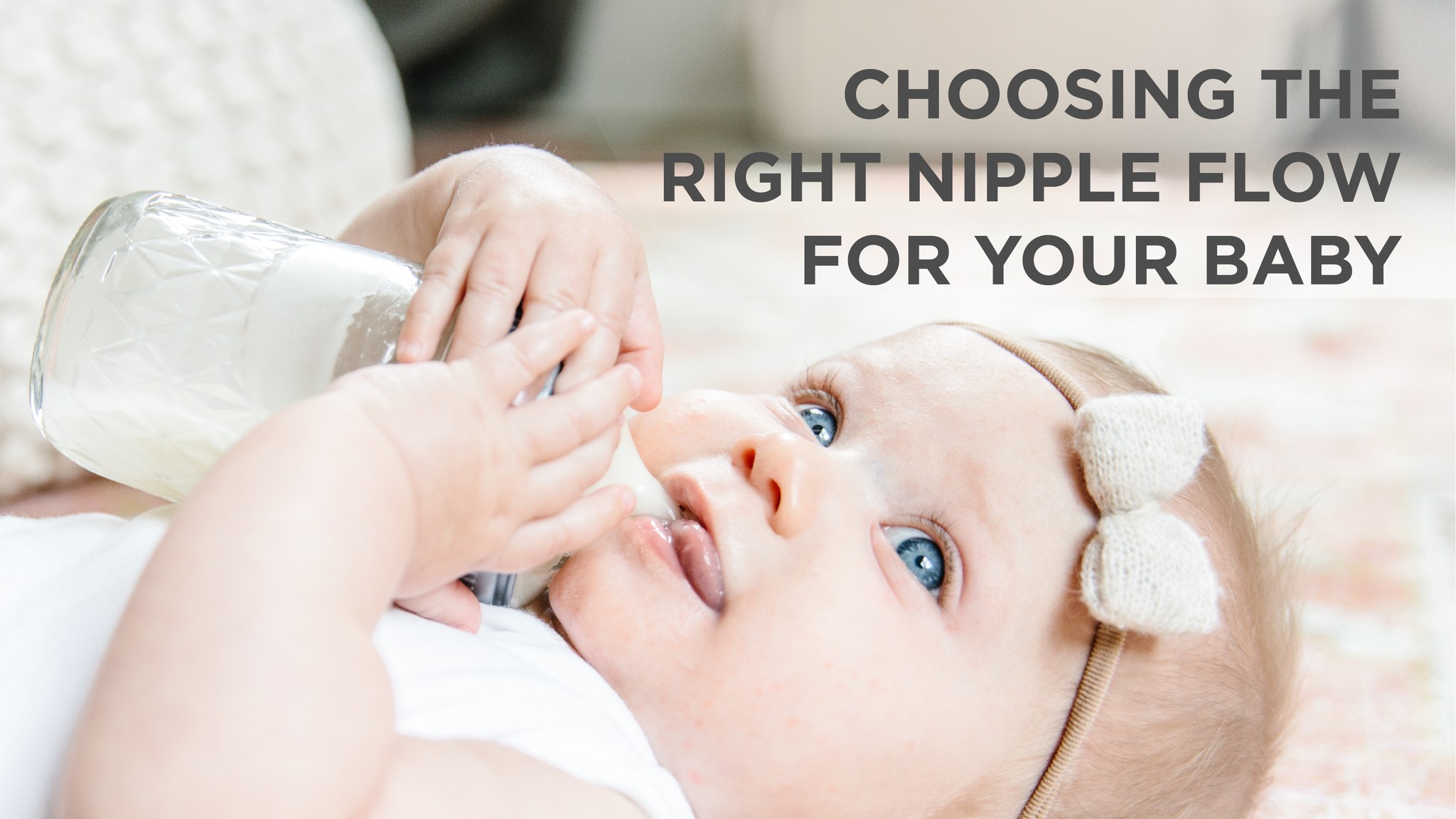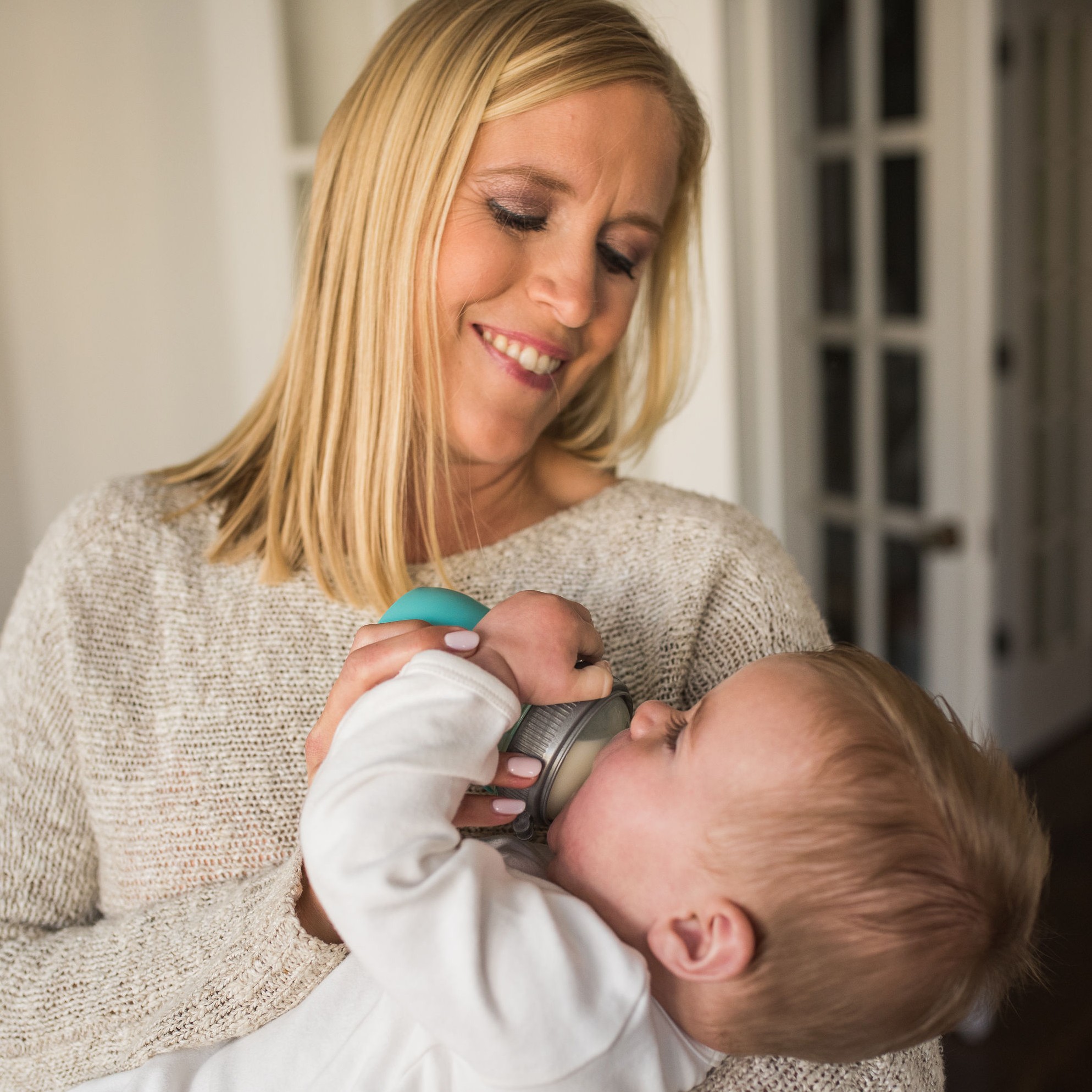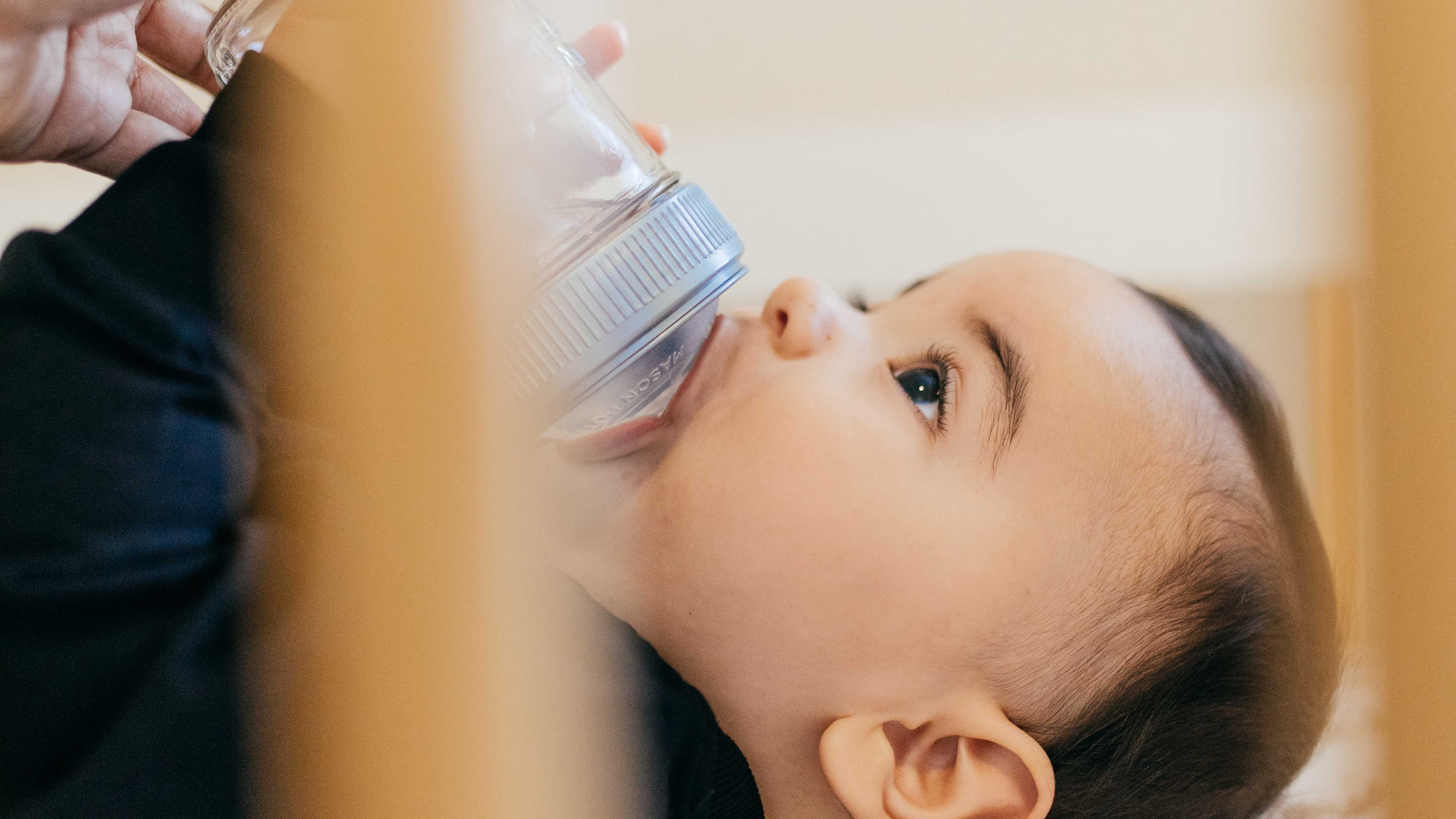Breastfeeding moms often worry that using a baby bottle nipple that flows too quickly will cause “nipple confusion” i.e. baby preferring the bottle or being fussy at the breast.
At Mason Bottle, our goal is to support breastfeeding to the greatest extent possible, so we really can’t talk about bottles and nipple flow without first talking about nipple confusion and how to avoid it.
In this article, we’ve compiled a few key scientific papers on the topic to make sure you’re armed with the info you need to balance breastfeeding and bottles with your child.
What can the research about nipple confusion tell us?
The research to date on nipple confusion hasn’t been able to identify the root cause. A 2015 literature review [1] of all the available peer-reviewed research on the topic of nipple confusion found that no study has been able to identify the true cause of nipple confusion as there are many possible reasons why a baby can be fussy at the breast, ranging from pre-existing feeding challenges, to mood, to growth spurts, and more.
What can the research about nipple confusion tell us?
The research to date on nipple confusion hasn’t been able to identify the root cause. A 2015 literature review [1] of all the available peer-reviewed research on the topic of nipple confusion found that no study has been able to identify the true cause of nipple confusion as there are many possible reasons why a baby can be fussy at the breast, ranging from pre-existing feeding challenges, to mood, to growth spurts, and more.
How can I prevent nipple confusion and fussiness at the breast?
The next thing to know about nipple confusion is that delaying the introduction of bottles is a good preventative measure. In the book The Womanly Art of Breastfeeding authored by La Leche League, they recommend waiting to introduce bottles until 3-4 weeks after birth, once breastfeeding is well established [2].
Lactation consultants have all kinds of tools and tricks to ensure breastfeeding gets well established, including strategies to delay introducing bottles even if supplementation is required after breastfeeding.
If you’ve already introduced bottles or did so on different timing, don’t worry. The key is to leverage your medical team to make sure that breastfeeding is well established. Once you have that down, you and your baby will be better-equipped to handle changes in schedules, bottles, nipple flow, etc...without impacting your breastfeeding relationship.
How can I prevent nipple confusion and fussiness at the breast?
The next thing to know about nipple confusion is that delaying the introduction of bottles is a good preventative measure. In the book The Womanly Art of Breastfeeding authored by La Leche League, they recommend waiting to introduce bottles until 3-4 weeks after birth, once breastfeeding is well established [2].
Lactation consultants have all kinds of tools and tricks to ensure breastfeeding gets well established, including strategies to delay introducing bottles even if supplementation is required after breastfeeding.
If you’ve already introduced bottles or did so on different timing, don’t worry. The key is to leverage your medical team to make sure that breastfeeding is well established. Once you have that down, you and your baby will be better-equipped to handle changes in schedules, bottles, nipple flow, etc...without impacting your breastfeeding relationship.
What do I do if my baby is fussy at the breast?
It’s important to note that throughout your breastfeeding journey, you will encounter times when baby is fussier than usual while breastfeeding.
These bumps in the road are a normal part of the breastfeeding journey, and KellyMom.com [3] has an excellent troubleshooting guide here to get back on track.
Going to see your lactation consultant is also a good option if you feel like things aren’t resolving quickly.
When breastfeeding is going smoothly, you can begin to think about nipple flow.
What do I do if my baby is fussy at the breast?
It’s important to note that throughout your breastfeeding journey, you will encounter times when baby is fussier than usual while breastfeeding.
These bumps in the road are a normal part of the breastfeeding journey, and KellyMom.com [3] has an excellent troubleshooting guide here to get back on track.
Going to see your lactation consultant is also a good option if you feel like things aren’t resolving quickly.
When breastfeeding is going smoothly, you can begin to think about nipple flow.
What does the research say about nipple flow on baby bottles?
Research has shown that there are no industry standards for flow rates on baby bottles [4].
Different brands call their nipple sizes different things, but this means that what one bottle brand labels as an appropriate flow for “3-6 months” isn’t going to be the same as another brand’s “3-6 months” nipple flow. Developmental differences in children can also make these age guidelines unreliable.
Regardless of the bottle brand, always start with the slowest flowing option first. You can increase flow when the time is right using the guidelines in the next section.
What does the research say about nipple flow on baby bottles?
Research has shown that there are no industry standards for flow rates on baby bottles [4].
Different brands call their nipple sizes different things, but this means that what one bottle brand labels as an appropriate flow for “3-6 months” isn’t going to be the same as another brand’s “3-6 months” nipple flow. Developmental differences in children can also make these age guidelines unreliable.
Regardless of the bottle brand, always start with the slowest flowing option first. You can increase flow when the time is right using the guidelines in the next section.
When and how do I increase the nipple flow on my baby’s bottle?
Due to the variations in nipple brands and in child development, the best way to gauge the appropriate nipple flow for your baby is to look for real-time cues from your baby rather than basing strictly around age or labels [5].
When and how do I increase the nipple flow on my baby’s bottle?
Due to the variations in nipple brands and in child development, the best way to gauge the appropriate nipple flow for your baby is to look for real-time cues from your baby rather than basing strictly around age or labels [5].
Does Mason Bottle have differing nipple flow rates?
Yes! Our Mason Bottle nipples come in 4 different flows, you can determine the flow of the nipple by looking at the holes in the top.
Note: The nipples may appear to have an "extra" hole, but this is simply a manufacturing blemish from the molding process and not a missed punched hole.
Before the end of 2021, we are also adding a letter on the side of the nipple to make it easier. S for Slow, M for Medium, F for Fast and Y for Flexible/Y-Cut.
Does Mason Bottle have differing nipple flow rates?
Yes! Our Mason Bottle nipples come in 4 different flows, you can determine the flow of the nipple by looking at the holes in the top.
Note: The nipples may appear to have an "extra" hole, but this is simply a manufacturing blemish from the molding process and not a missed punched hole.
Before the end of 2021, we are also adding a letter on the side of the nipple to make it easier. S for Slow, M for Medium, F for Fast and Y for Flexible/Y-Cut.
Don't Be Scared to Try
There is nothing wrong with trying a faster nipple flow if your baby is showing the "up" cues. If they start showing some of the "down" cues, there is nothing wrong with reverting back to a slower flow.
You, and only you know your baby the best. Our hope is offering this research, in one convenient place will help ease the pain points of the arising questions that come with switching nipple flows and will help you determine when and if, your baby is ready.
Don't Be Scared to Try
There is nothing wrong with trying a faster nipple flow if your baby is showing the "up" cues. If they start showing some of the "down" cues, there is nothing wrong with reverting back to a slower flow.
You, and only you know your baby the best. Our hope is offering this research, in one convenient place will help ease the pain points of the arising questions that come with switching nipple flows and will help you determine when and if, your baby is ready.
References
[1] Zimmerman, E. and Thompson, K., (2015) 'Clarifying nipple confusion,' Journal of Perinatology, 35(11), pp.895-899. doi:10.1038/jp.2015.83 [Accessed: 29 August 2021].
[2] ‘Bottles and Other Tools: When is the Best Time to Introduce a Bottle?’ (2019) LaLeche League International. Available at: https://www.llli.org/breastfeeding-info/bottles/ [Accessed: 27 September 2021]
[3] Bonyatta, Kelly, BS, IBCLC (2018) ‘My Baby Fusses or Cries When Breastfeeding - What’s the Problem?’ KellyMom.com Available at: https://kellymom.com/bf/concerns/child/fussy-while-nursing/#flowpreference [Accessed: 28 September 2021].
[4] Pados, B., Park, J., Thoyre, S., Estrem, H. and Nix, W. (2015) 'Milk Flow Rates From Bottle Nipples Used for Feeding Infants Who Are Hospitalized’ American Journal of Speech-Language Pathology, 24(4), pp.671-679. doi: 10.1044/2015_AJSLP-15-0011 [Accessed: 29 August 2021].
[5] 'Practical Bottle Feeding Tips' (2011) HealthyChildren.org. Available at: https://www.healthychildren.org/English/ages-stages/baby/feeding-nutrition/Pages/Practical-Bottle-Feeding-Tips.aspx [Accessed: 30 August 2021].
Want to stay informed when we add new, relevant and helpful information info to our blog? Enter your best email and we will let you know!







